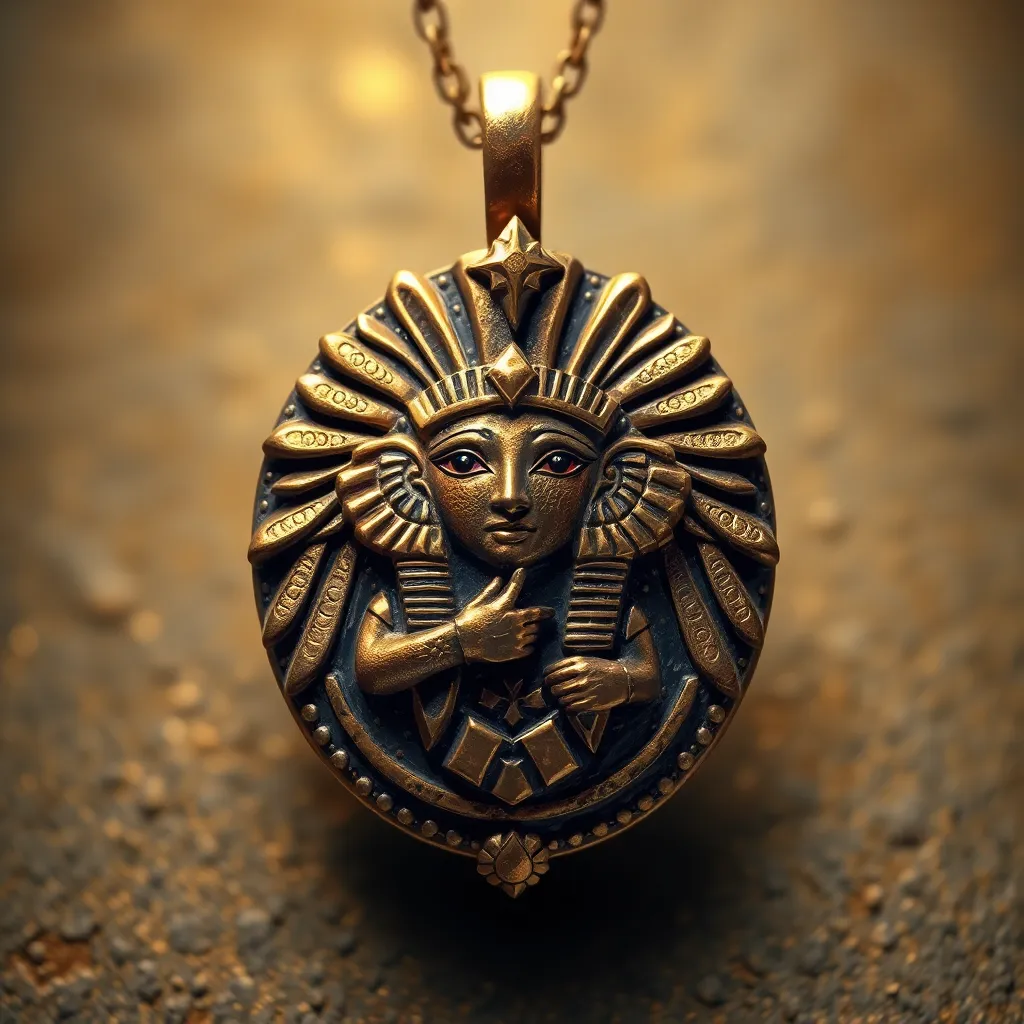The Amulet of Hathor: Love, Joy, and Protection
I. Introduction
The Amulet of Hathor is a fascinating artifact that encapsulates the essence of one of ancient Egypt’s most beloved goddesses. Known as the goddess of love, joy, and protection, Hathor held a special place in the hearts of the ancient Egyptians. This article explores the significance of the Amulet of Hathor within the context of ancient Egyptian culture, its historical background, design elements, societal roles, and its modern interpretations.
II. Historical Background of Hathor
Hathor is one of the oldest and most important deities in the Egyptian pantheon, with origins tracing back to the early dynastic period. Initially, she was worshipped as a sky goddess and later evolved into a multifaceted deity representing various aspects of life.
A. Origins of the goddess Hathor in Egyptian mythology
Hathor’s origins are steeped in mythology, often depicted as the daughter of Ra, the sun god. She is associated with the Milky Way and is sometimes portrayed as a cow, symbolizing nourishment and motherhood.
B. Attributes and symbolism associated with Hathor
- Goddess of love and beauty
- Protector of women and children
- Symbol of joy and celebration
- Patroness of music and dance
C. Cultural importance throughout different dynasties
Throughout various dynasties, Hathor’s worship expanded and evolved, becoming a central figure in many festivals, particularly the famous Feast of Hathor, which celebrated her connection to joy and fertility.
III. The Design and Symbolism of the Amulet
The Amulet of Hathor was crafted with great care and attention to detail, reflecting the reverence held for the goddess.
A. Common materials used in the creation of the amulet
Amulets were typically made from:
- Gold and silver
- Faience (a glazed ceramic material)
- Stone, including lapis lazuli and turquoise
B. Iconographic elements and their meanings
The design of the Amulet of Hathor often included:
- Hathor’s cow horns, sometimes adorned with a sun disk
- Symbols of fertility such as lotus flowers
- Other deities or symbols that represented protection and joy
C. Variations in design across different time periods
As time progressed, the design of the amulet reflected the artistic styles and cultural influences of different periods, showing variations in form, size, and intricacy.
IV. The Role of the Amulet in Ancient Egyptian Society
The Amulet of Hathor played a significant role in the daily lives and spiritual practices of ancient Egyptians.
A. Use of the amulet in daily life
People wore the amulet as a personal protective charm, believed to bring love and joy into their lives. It was common to see individuals wearing these amulets during significant life events, such as marriages and births.
B. Significance in rituals and religious practices
The amulet was also integral to various rituals, including:
- Weddings, where it symbolized love and commitment
- Childbirth ceremonies to ensure safety and health for mother and child
- Festivals honoring Hathor, which included music and dance
C. Beliefs surrounding protection and blessings
Ancient Egyptians believed that the Amulet of Hathor held protective qualities, serving as a talisman against misfortune and evil spirits.
V. Love and Joy: The Dual Aspects of the Amulet
The Amulet of Hathor embodies the dual aspects of love and joy, reflecting the goddess’s nature.
A. How the amulet symbolizes love and relationships
Hathor was revered as the goddess of love, often invoked in matters of the heart. The amulet was a symbol of affection, frequently given as a gift between lovers.
B. Connection to joy, celebration, and fertility
The amulet also symbolized joy and was worn during celebrations. Its connection to fertility made it popular among those wishing to conceive.
C. Rituals associated with love and joy involving the amulet
Rituals involving the amulet often included:
- Offering flowers and food to Hathor
- Performing dances and music in her honor
- Reciting prayers for love and happiness
VI. Protective Qualities of the Amulet
The protective qualities of the Amulet of Hathor were highly valued in ancient Egyptian society.
A. Beliefs about the amulet’s protective powers
Ancient Egyptians believed that wearing the amulet could ward off negative influences and evil spirits, making it a crucial part of one’s personal protection.
B. Historical examples of its use for safeguarding individuals
There are records of soldiers wearing the amulet during battles, as well as parents placing it on their children to keep them safe from harm.
C. The role of the amulet in funerary practices
The amulet was also included in burial practices to protect the deceased in the afterlife, ensuring their safe passage and continued blessings from Hathor.
VII. The Amulet of Hathor in Modern Context
In contemporary times, the Amulet of Hathor has seen a resurgence in interest, embodying both historical significance and modern spiritual practices.
A. Revival of interest in ancient Egyptian artifacts
With a growing fascination for ancient cultures, the Amulet of Hathor has become a sought-after artifact among collectors and enthusiasts.
B. Contemporary interpretations and uses of the amulet
Today, many individuals wear replicas of the amulet as symbols of love and protection, integrating ancient beliefs into modern spirituality.
C. Influence on modern jewelry and spirituality
The design of the amulet has influenced modern jewelry, with many artisans incorporating its elements into contemporary pieces that celebrate love and protection.
VIII. Conclusion
The Amulet of Hathor stands as a testament to the enduring power of love, joy, and protection in ancient Egyptian culture. Its significance extends beyond the past, reflecting a legacy that continues to inspire and resonate in today’s society. As we explore the themes of love and protection, we are reminded of the universal human experiences that connect us all, regardless of the era we inhabit.




